Are you wondering How Can I Sell Photos Online and turn your passion into profit? At dfphoto.net, we provide expert guidance to help you navigate the world of online photography sales, offering insights into image licensing, digital downloads, and print sales. Discover how to leverage your photography skills, explore various sales platforms, and optimize your images for maximum exposure to boost your photography career. Let’s unlock the potential of your photo assets.
1. Best Websites For Selling Photos Online
Selling photos online can be a lucrative way to monetize your photography skills. Whether you are an amateur or professional photographer, several platforms cater to your needs. These websites act as intermediaries, connecting your images with potential buyers who need high-quality visuals for various purposes.
1.1. Alamy
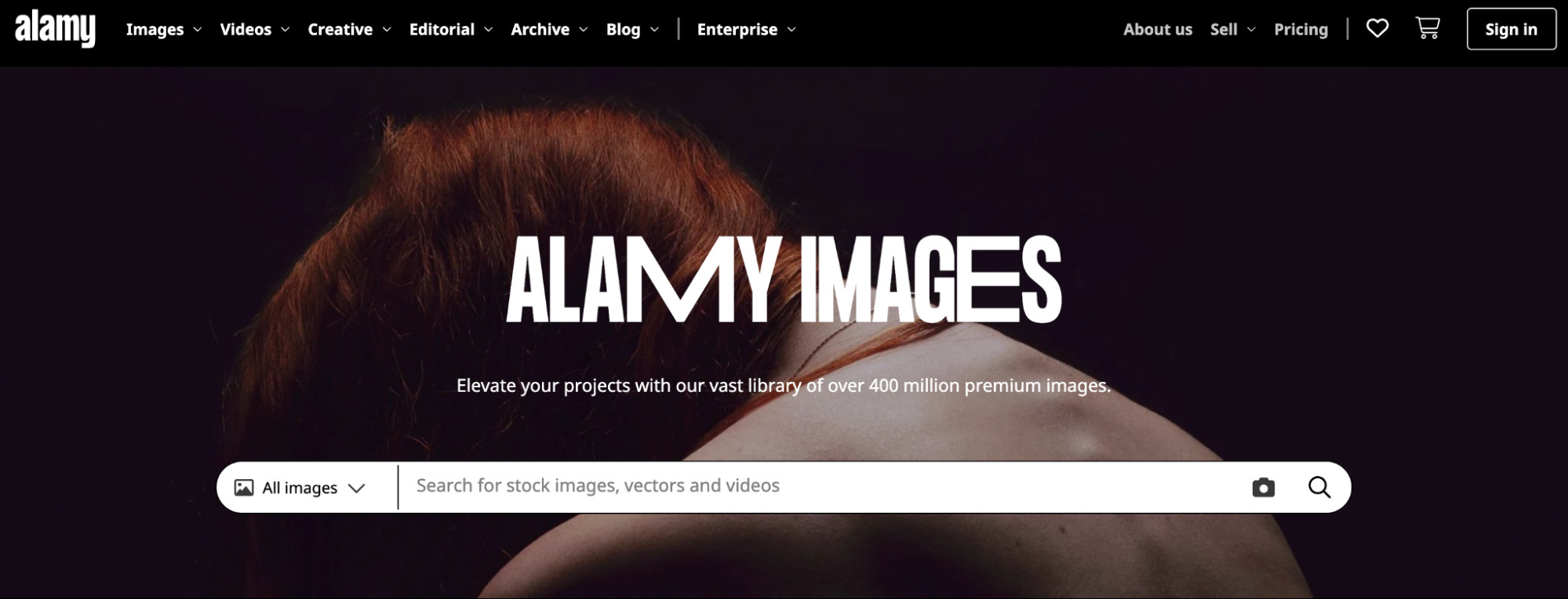 Alamy Images homepage showing a search bar for people to find royalty-free images, catering to diverse user searches for stock photography
Alamy Images homepage showing a search bar for people to find royalty-free images, catering to diverse user searches for stock photography
What is Alamy? Alamy boasts one of the most diverse stock photo collections on the internet. According to research from Alamy’s 2024 annual report, their library includes millions of stock images, vectors, videos, and 360-degree panoramic images. This variety makes it a great platform for photographers to contribute diverse content. Alamy also offers an iOS app called Stockimo, allowing you to sell photos online directly from your smartphone, ensuring accessibility and convenience.
How can I earn money with Alamy? Alamy offers monthly payments to its contributors. Photographers can earn between 17% and 50% of sales, depending on factors such as image popularity and license type. There are no long-term contracts, offering flexibility and payment in multiple currencies, making it accessible for international photographers.
1.2. 500px
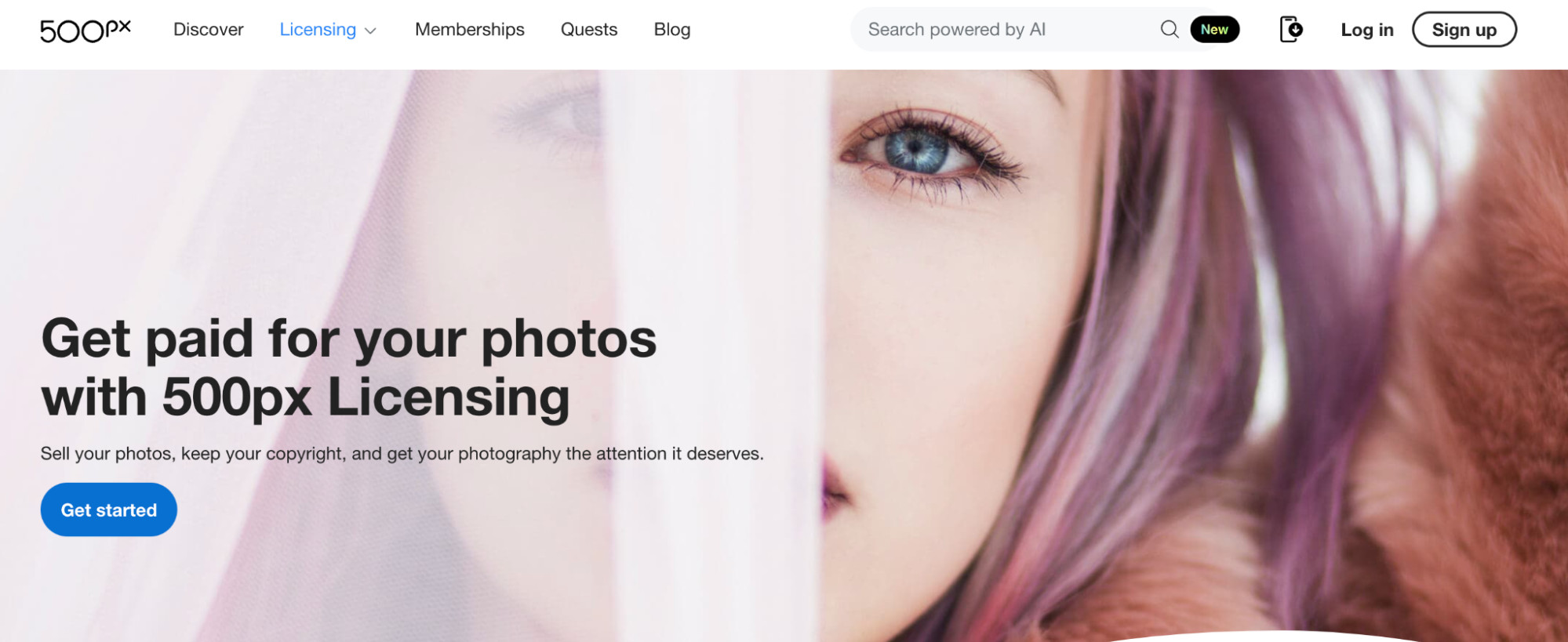 500px’s homepage highlights licensing opportunities, showing how contributors can monetize their photos effectively
500px’s homepage highlights licensing opportunities, showing how contributors can monetize their photos effectively
What is 500px? 500px combines stock photo licensing with community features, hosting millions of photographers who sell and license photos online. Its Pulse algorithm highlights new photographs and photographers to clients, providing exposure even for inexperienced photographers. According to a 500px case study, photographers who consistently upload high-quality images meeting platform standards see increased visibility.
How can I earn money with 500px? 500px also serves as an online community where photographers can follow others, receive feedback, list photos in the marketplace, and participate in competitions. Paying members can earn up to 100% royalties for exclusive photos, offering a substantial incentive for committed contributors.
1.3. Shutterstock
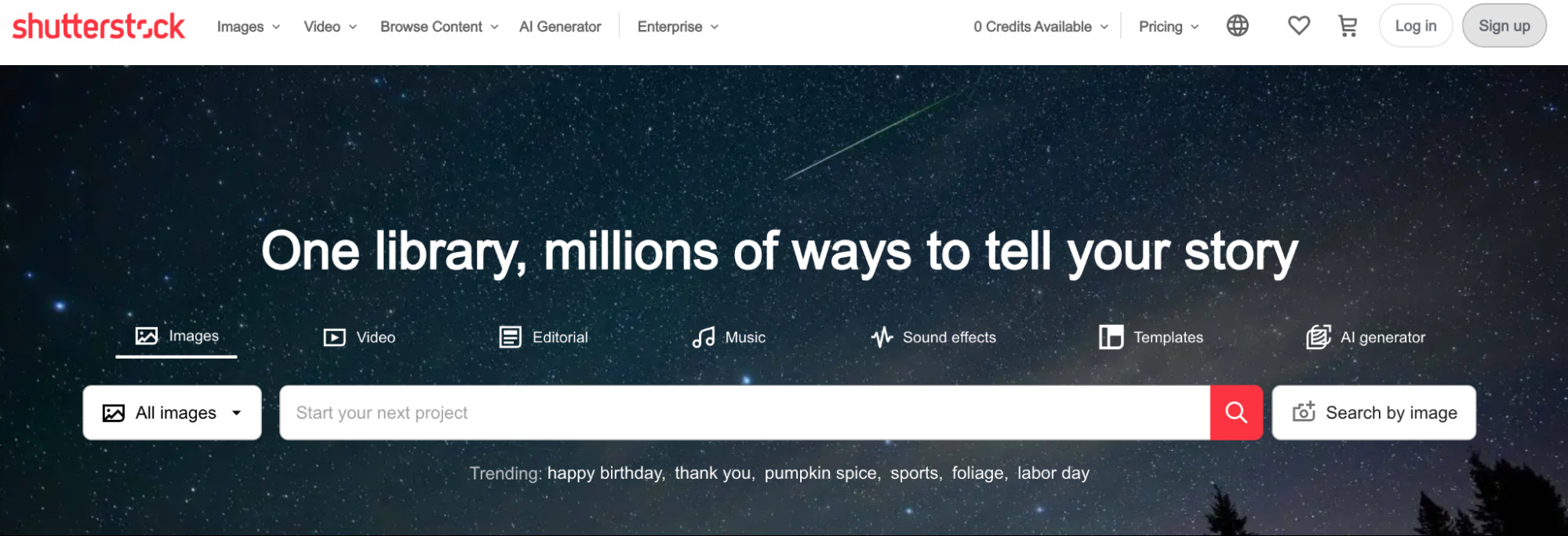 Shutterstock homepage offering royalty-free images, video, and music, a popular platform for selling and buying stock content
Shutterstock homepage offering royalty-free images, video, and music, a popular platform for selling and buying stock content
What is Shutterstock? Shutterstock is a well-known stock photography website with a wide reach. According to their official website, Shutterstock has paid out over $1 billion to its community in the past 15 years, making it a reliable platform for photographers. It is considered a micro-stock site where photos are cheaper and non-exclusive. Contributing a large quantity of images increases the chances of downloads.
How can I earn money with Shutterstock? Payouts range from 15% to 40% based on earnings over time. Shutterstock also offers an affiliate program, allowing you to earn additional money by referring new photographers or customers, providing multiple income streams.
1.4. Getty Images
 Getty Images’ homepage provides a search bar for users to find high-quality photos and images, essential for creative projects
Getty Images’ homepage provides a search bar for users to find high-quality photos and images, essential for creative projects
What is Getty Images? Getty Images attracts brands and online publishers seeking high-quality, exclusive images. Together with its microstock site, iStock, it reaches over 1.5 million customers worldwide. Maintaining its reputation, Getty has stricter standards for selling photography compared to other stock photo sites.
How can I earn money with Getty Images? To become a contributor, you need to apply with a set of sample photos. Once accepted, you can earn between 15% and 45% of an image’s license fee. According to Getty Images’ contributor guidelines, photographers must adhere to high technical and artistic standards to ensure quality.
1.5. iStock
 Landing page for iStock showcasing its generative AI-powered image creator, enhancing image creation and accessibility for users
Landing page for iStock showcasing its generative AI-powered image creator, enhancing image creation and accessibility for users
What is iStock? iStock is an offshoot of Getty Images. The main difference is that photos on iStock can be non-exclusive, meaning you can sell your photography with other agencies. This provides more flexibility for photographers who want to diversify their income sources.
How can I earn money with iStock? To sell photos on iStock, you need to apply with sample images. Commissions range from 15% to 45%, depending on contributor agreements. iStock emphasizes the importance of understanding market trends and customer needs to maximize sales.
1.6. Stocksy
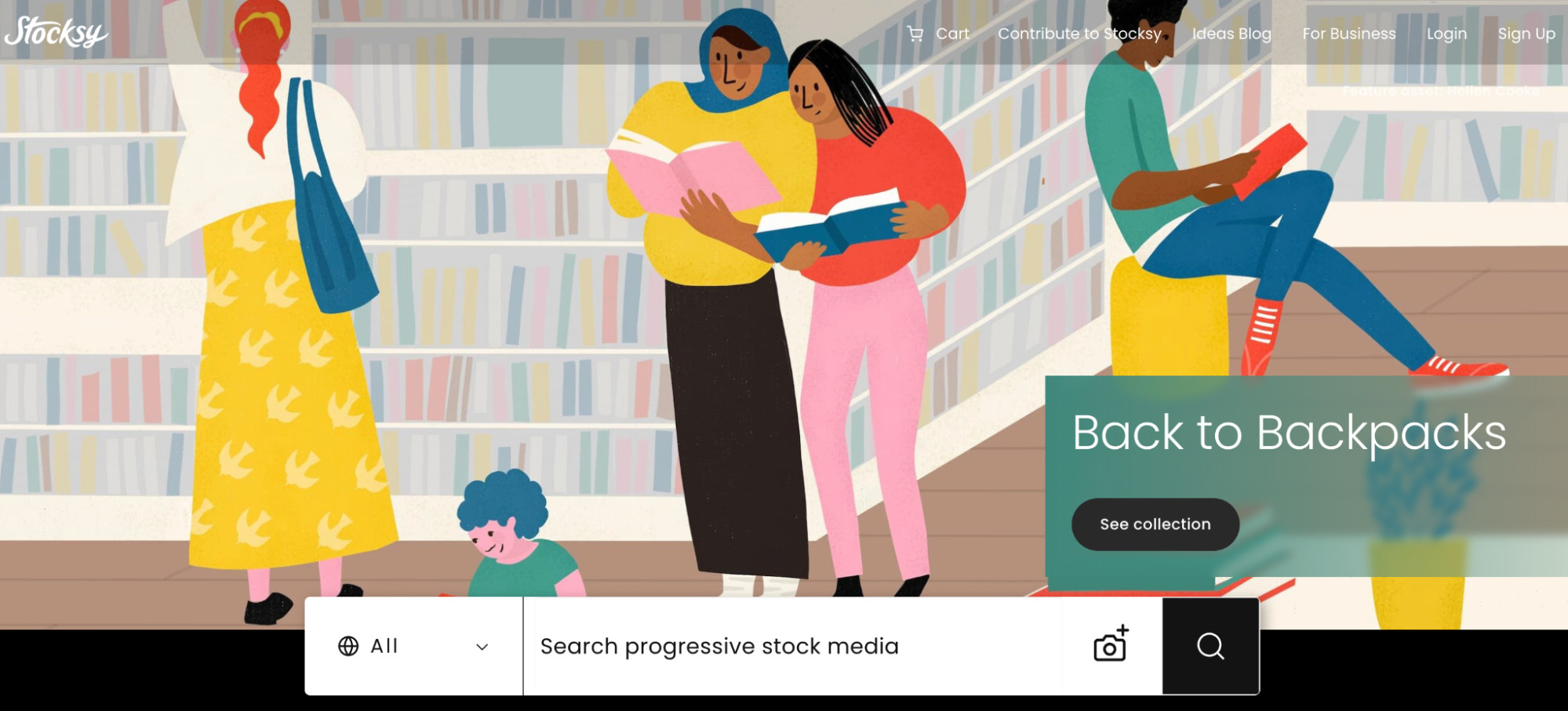 Stocksy homepage features an art graphic of people in a library, reflecting its community-focused and creative platform for stock photography
Stocksy homepage features an art graphic of people in a library, reflecting its community-focused and creative platform for stock photography
What is Stocksy? Stocksy is a popular stock photography site known for offering high payouts to contributors. Photographers can earn a 50% royalty on standard licenses and 75% on extended licenses. However, all photos must be exclusive to the platform.
How can I earn money with Stocksy? Stocksy is an artist-owned cooperative, meaning contributors are part owners of the business and can influence its direction. Contributors can also receive profit-sharing. Payments are made monthly via PayPal, Payoneer, or check, with a minimum payout of $100.
1.7. Picfair
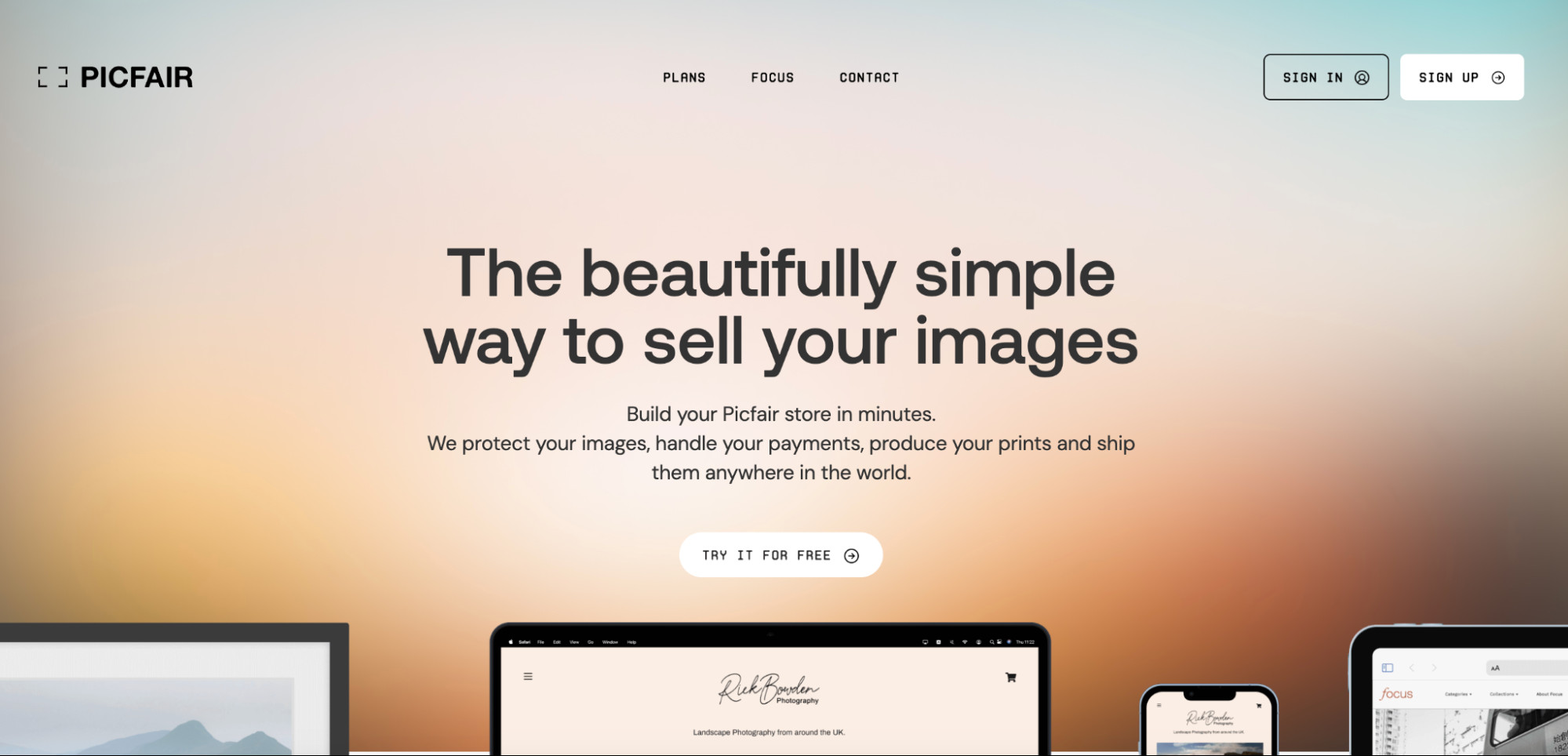 Picfair landing page promotes a website builder designed for photographers, simplifying the process of creating and managing online portfolios
Picfair landing page promotes a website builder designed for photographers, simplifying the process of creating and managing online portfolios
What is Picfair? Picfair is a good option if you want control over your online photo portfolio. You can set your own prices for photos, both prints and digital downloads, and Picfair handles payment processing, print production, shipping, and licenses for digital images.
How can I earn money with Picfair? By signing up for a Plus plan, priced at $4 per month when billed annually, you can create a custom Picfair store with up to 10,000 images that can be sold as prints or downloads, offering photographers complete control over their earnings.
1.8. Adobe Stock
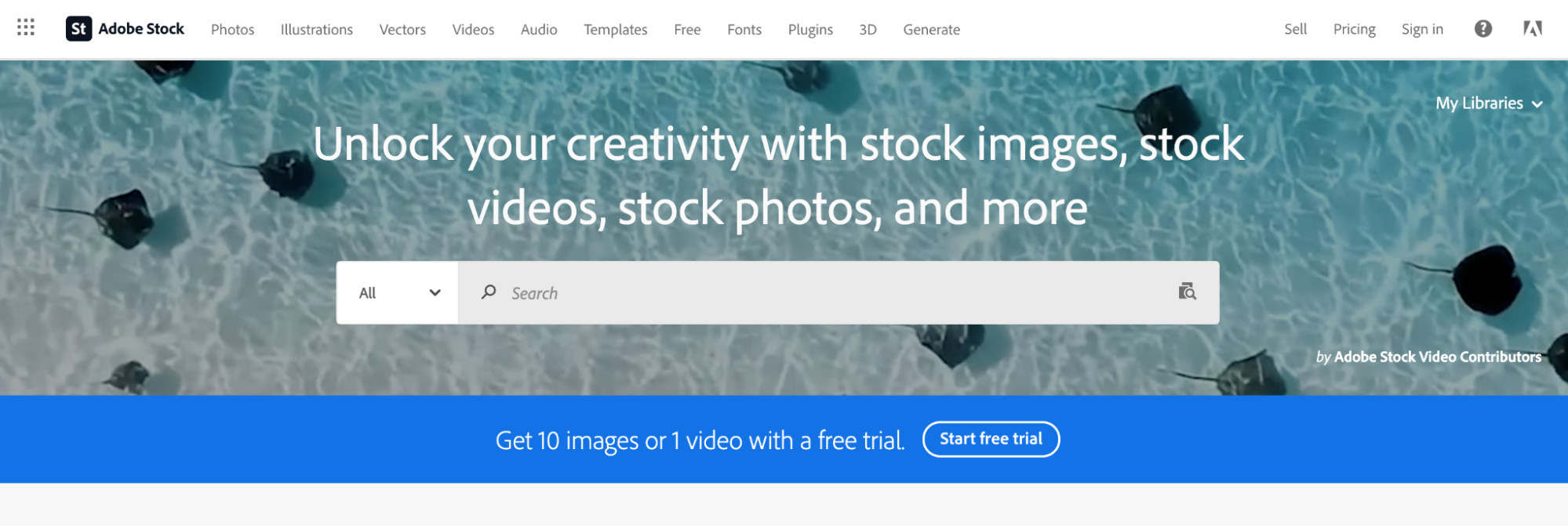 Adobe Stock homepage shows a search bar against a photo of sting rays, highlighting its integration with Adobe's creative software suite
Adobe Stock homepage shows a search bar against a photo of sting rays, highlighting its integration with Adobe's creative software suite
What is Adobe Stock? If you use the Adobe suite for photography projects, you can add your images, videos, vectors, and illustrations to Adobe Stock, the company’s online stock photo platform. Adobe Stock integrates seamlessly with Lightroom and Bridge, streamlining the workflow for Adobe users.
How can I earn money with Adobe Stock? Contributors who link their Adobe ID to Adobe Stock can earn 33% royalties on photos and 35% on videos, making it an appealing option for those already using Adobe products.
1.9. Envato Elements
 Landing page for stock photos on Envato Market, emphasizing its diverse and comprehensive library for creative projects
Landing page for stock photos on Envato Market, emphasizing its diverse and comprehensive library for creative projects
What is Envato Elements? Envato Elements is a stock photography site where you can sell your photos online and connect with potential clients. You can sell photos on its app or upload photos to your own site on the brand’s domain.
How can I earn money with Envato Elements? Contributors earn between 25% and 50% of net subscription revenue. According to Envato’s author guidelines, creating high-quality, in-demand content is essential for success on the platform.
1.10. Unsplash+
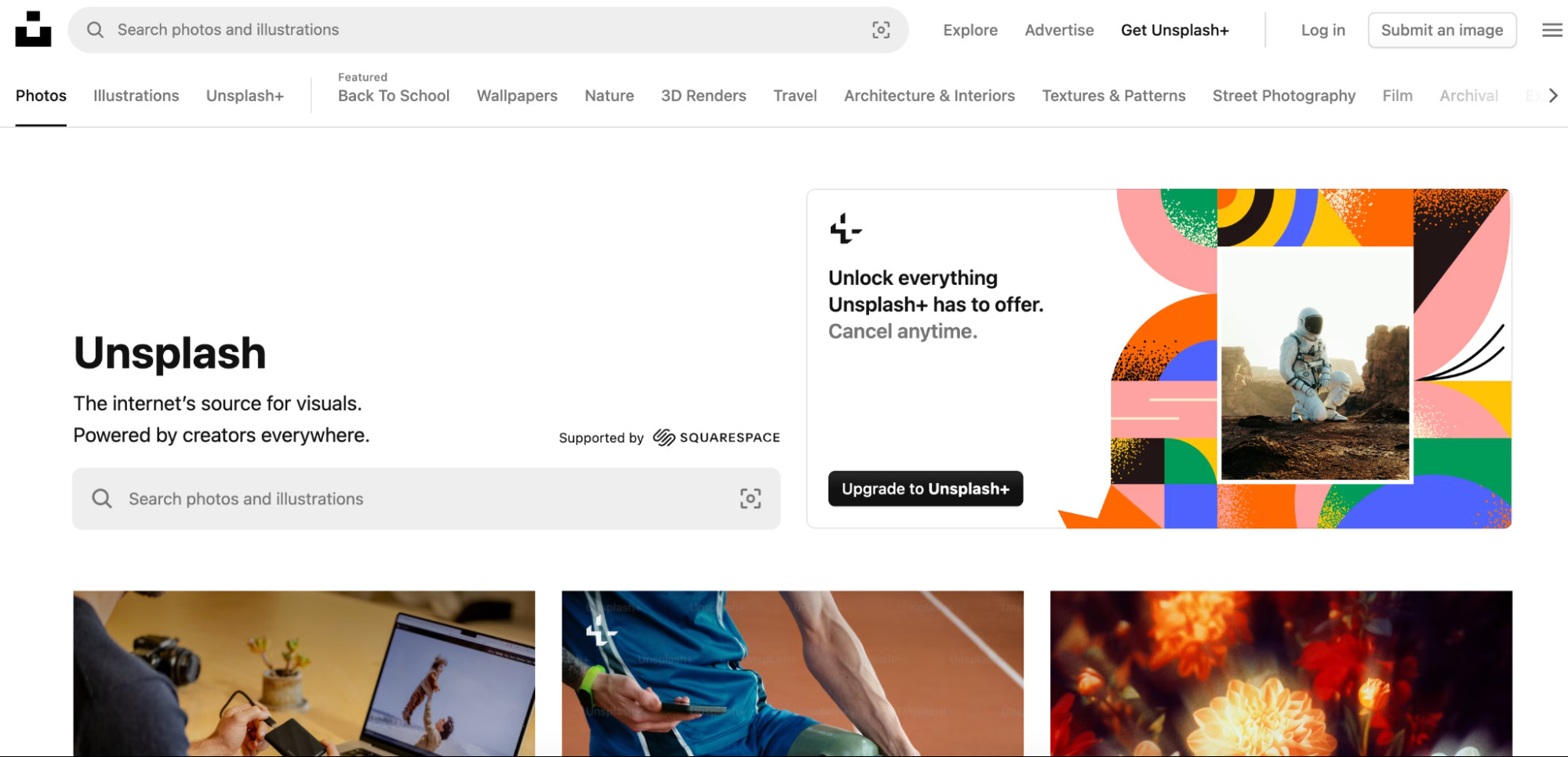 Unsplash homepage displays stock photos and a call-to-action, promoting its vast library of free images and opportunities for contributors
Unsplash homepage displays stock photos and a call-to-action, promoting its vast library of free images and opportunities for contributors
What is Unsplash+? Unsplash is a free stock photo site owned by Getty. Instead of paying photographers based on sales, Unsplash partners with contributors through its Unsplash+ program, where photographers respond to briefs and requests.
How can I earn money with Unsplash+? After completing the Unsplash+ contribution application, you can see a list of briefs created by Unsplash customers. Rates range from $5 to $30 per image. According to Unsplash, providing unique and visually compelling content is key to getting accepted.
1.11. Dreamstime
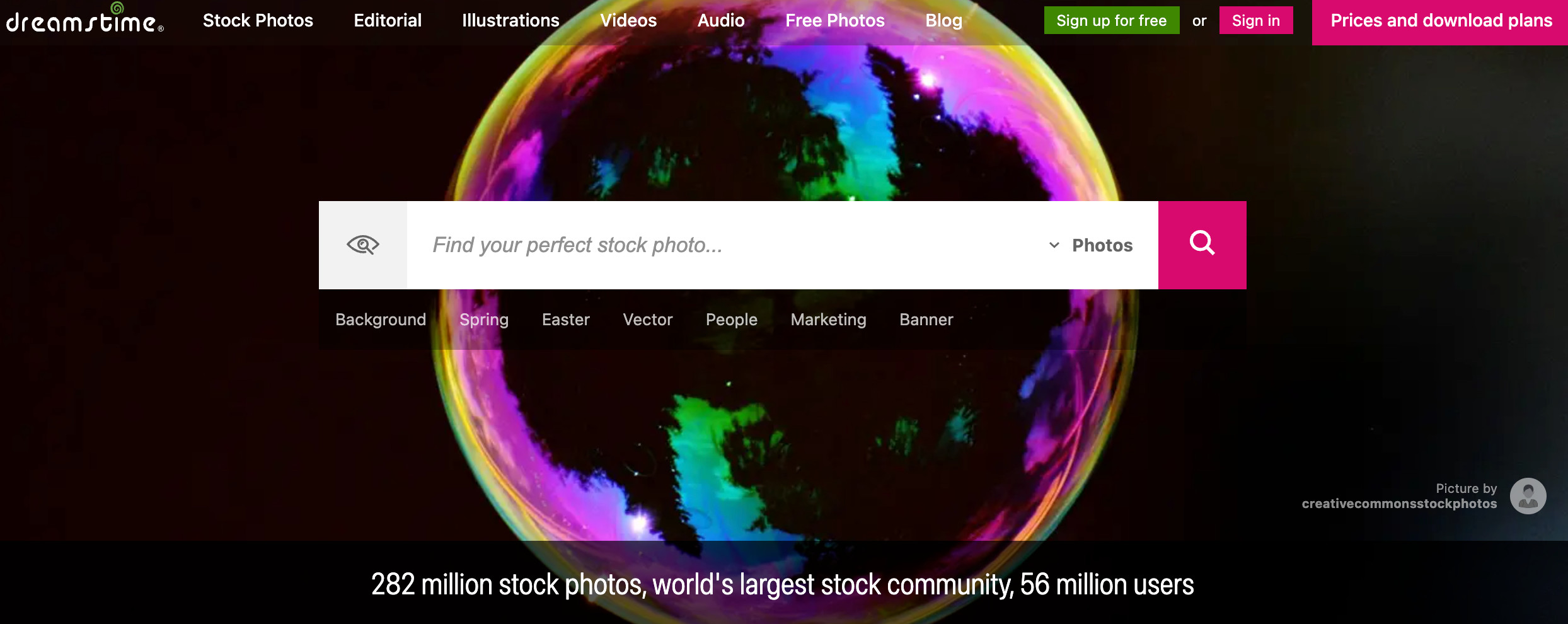 Dreamstime homepage allows users to sell photos, highlighting its extensive collection of royalty-free images and media assets
Dreamstime homepage allows users to sell photos, highlighting its extensive collection of royalty-free images and media assets
What is Dreamstime? Dreamstime is a microstock platform with a huge range of royalty-free media, including stock photos, vectors, videos, and audio files. With a library of more than 250 million files and a user base of over 50 million, it gives photographers access to a large, active audience.
How can I earn money with Dreamstime? Dreamstime offers revenue sharing of 25% to 50% for non-exclusive content. Exclusive contributors earn an additional 10% and receive 20¢ for each approved submission. The platform also features an affiliate program that pays 10% of transaction values for each referred contributor or customer.
1.12. Snapped4U
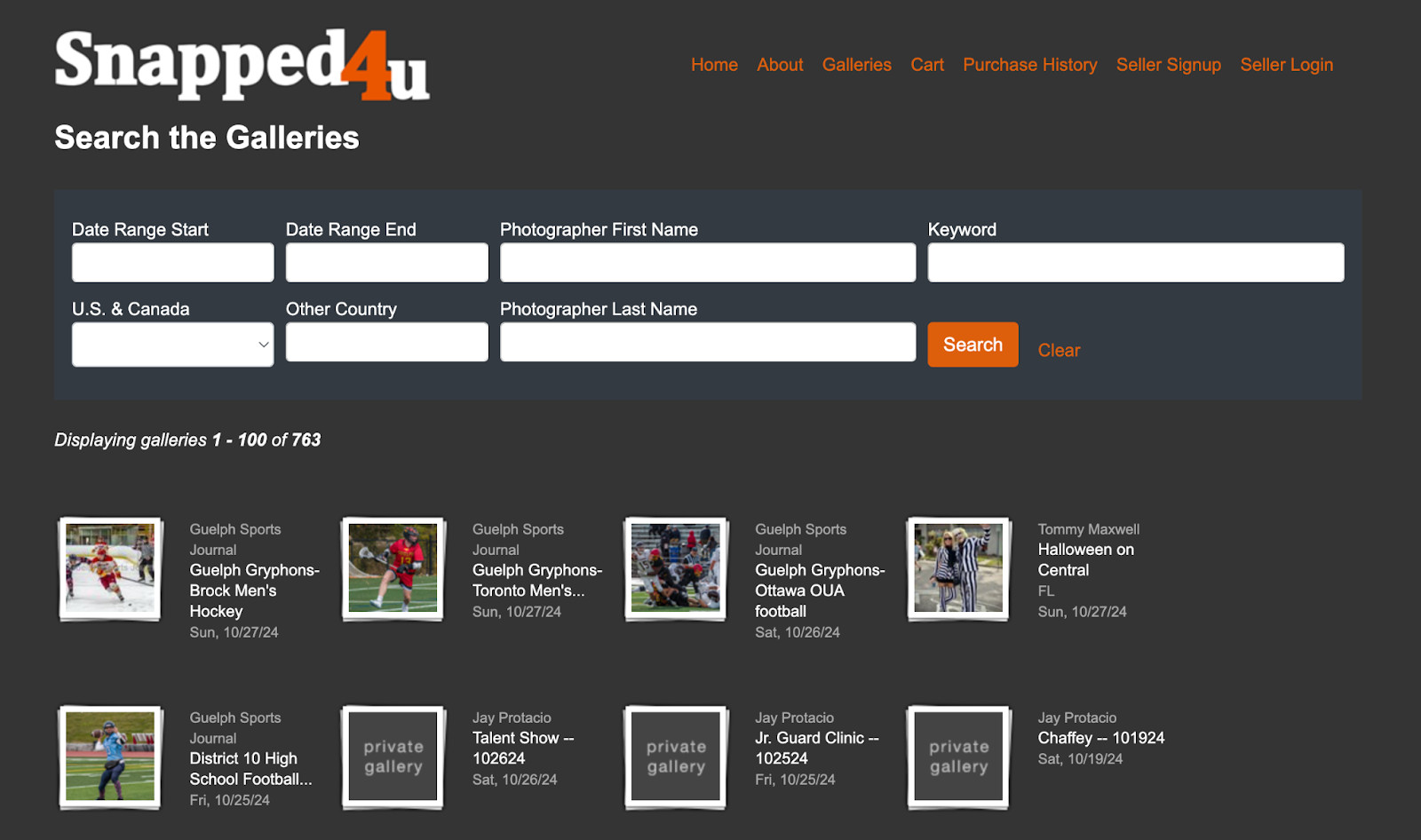 Snapped4U homepage showcases photos from sports photographers, focusing on event and portrait photography for direct client sales
Snapped4U homepage showcases photos from sports photographers, focusing on event and portrait photography for direct client sales
What is Snapped4U? Snapped4U is a marketplace for photographers specializing in portrait and event photography. It lets photographers create personalized galleries, set their own prices (up to $20 per image), and sell digital files directly to clients. It is designed for photographers selling photos to customers who attended events or sat for portraits.
How can I earn money with Snapped4U? Snapped4U charges a one-time $10 registration fee and retains a 10% to 12% commission on sales. Photographers are paid the balance in their account via PayPal on the first and 15th of each month. According to Snapped4U, photographers should focus on capturing high-quality, candid moments to appeal to event attendees.
1.13. Foap
 Foap creator landing page advertises a mobile app for photographers, enabling direct sales to brands and participation in photo missions
Foap creator landing page advertises a mobile app for photographers, enabling direct sales to brands and participation in photo missions
What is Foap? Foap is a photo-selling site that allows photographers to sell commercial-quality images directly to brands and individuals. Photographers can participate in “missions,” where brands set specific photo or video requirements and reward winners. To date, Foap has paid out more than $3 million to creators.
How can I earn money with Foap? Mission payouts range from $100 to $2,000. Users can also sell individual photos on Foap market. Foap takes a 50% commission on all sales. Foap emphasizes the importance of understanding brand needs and creating authentic, engaging visuals.
1.14. EyeEm
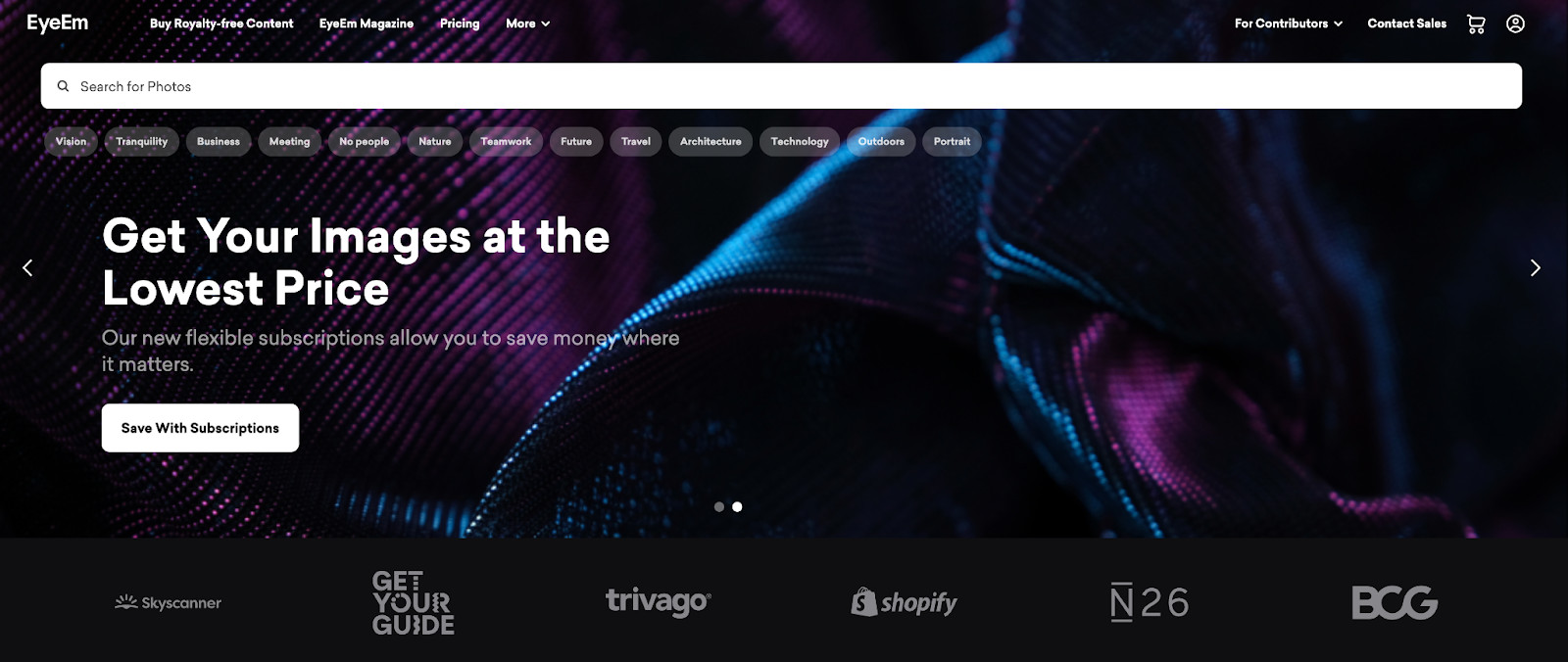 EyeEm homepage includes a search bar and examples of high-profile clients, blending a photo community with a commercial marketplace
EyeEm homepage includes a search bar and examples of high-profile clients, blending a photo community with a commercial marketplace
What is EyeEm? EyeEm combines a marketplace with a photographer community. The platform invites photographers to contribute to missions that call for images on a theme.
How can I earn money with EyeEm? Contributors earn a 50% commission on each sale made through the EyeEm marketplace. Photographers are paid via PayPal. According to EyeEm, engaging with the community and participating in missions can significantly increase visibility and sales.
1.15. Pond5 (for videos)
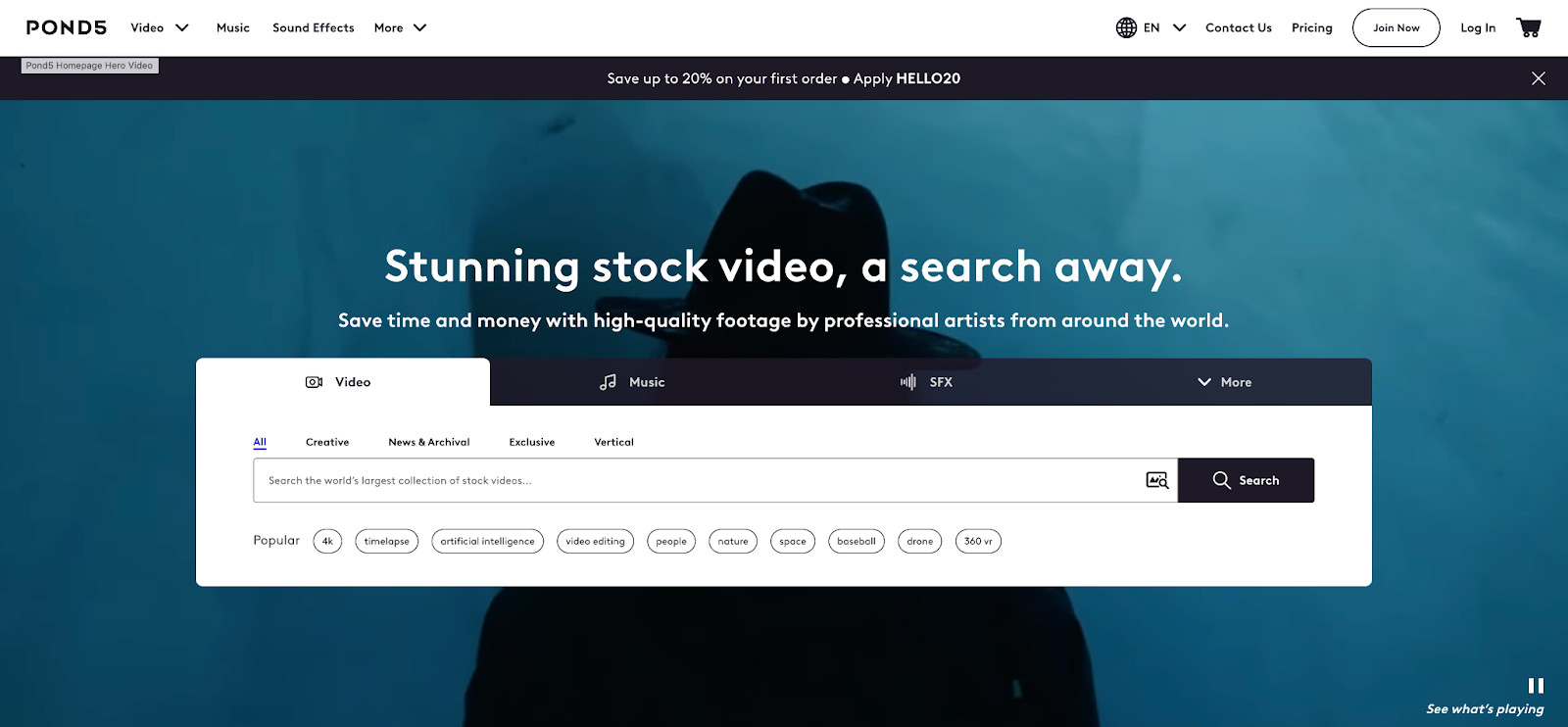 Pond5
Pond5
What is Pond5? Pond5 is a marketplace for selling royalty-free videos, music, sound effects, and other assets. Its customer base includes clients like the BBC and Disney, with contributor content used in ads, TV shows, and feature films. Contributors create Pond5 storefronts to showcase their media.
How can I earn money with Pond5? Video artists earn a 40% royalty share, with the option to make your content exclusive and earn up to 60%. Contributors can respond to client briefs via the Artist Portal. Pond5 also offers a referral program. Pond5 emphasizes the importance of creating high-quality, unique video content to attract major clients.
2. Tips For Selling Photos Online
To succeed in the competitive online photography market, you need a strategic approach. Here are some essential tips to help you maximize your earning potential:
2.1. Define Your Stock Photography Niche
Consistency in style and theme is essential. Whether your focus is travel, fashion, nature, or food, a consistent body of work helps build your brand and attracts a specific audience.
- Why is this important? Focusing on a niche allows you to target your efforts and build expertise, making your portfolio more appealing to buyers looking for specific content.
How to evaluate demand using keyword research? Use keyword research to analyze search volume for terms related to your photographs. Google Trends can help identify trending image topics.
2.2. Get On Instagram
Building an audience is crucial for photographers looking to sell images online.
- How can Instagram help? Visual social platforms like Instagram can help you reach a wide audience. Use Instagram tools to follow the right accounts, engage with popular hashtags, and grow a following of potential customers. Linking your social media accounts makes it easier to manage photo-sharing and boost visibility.
2.3. Integrate Ecommerce Into Your Website
Adding ecommerce functionality to your website can streamline the selling process.
- How to integrate ecommerce? By adding a Shopify Buy Button to your site, you can make it easier for customers to purchase stock images directly from you. Use a pre-designed art and photography theme or combine a free theme with a gallery app.
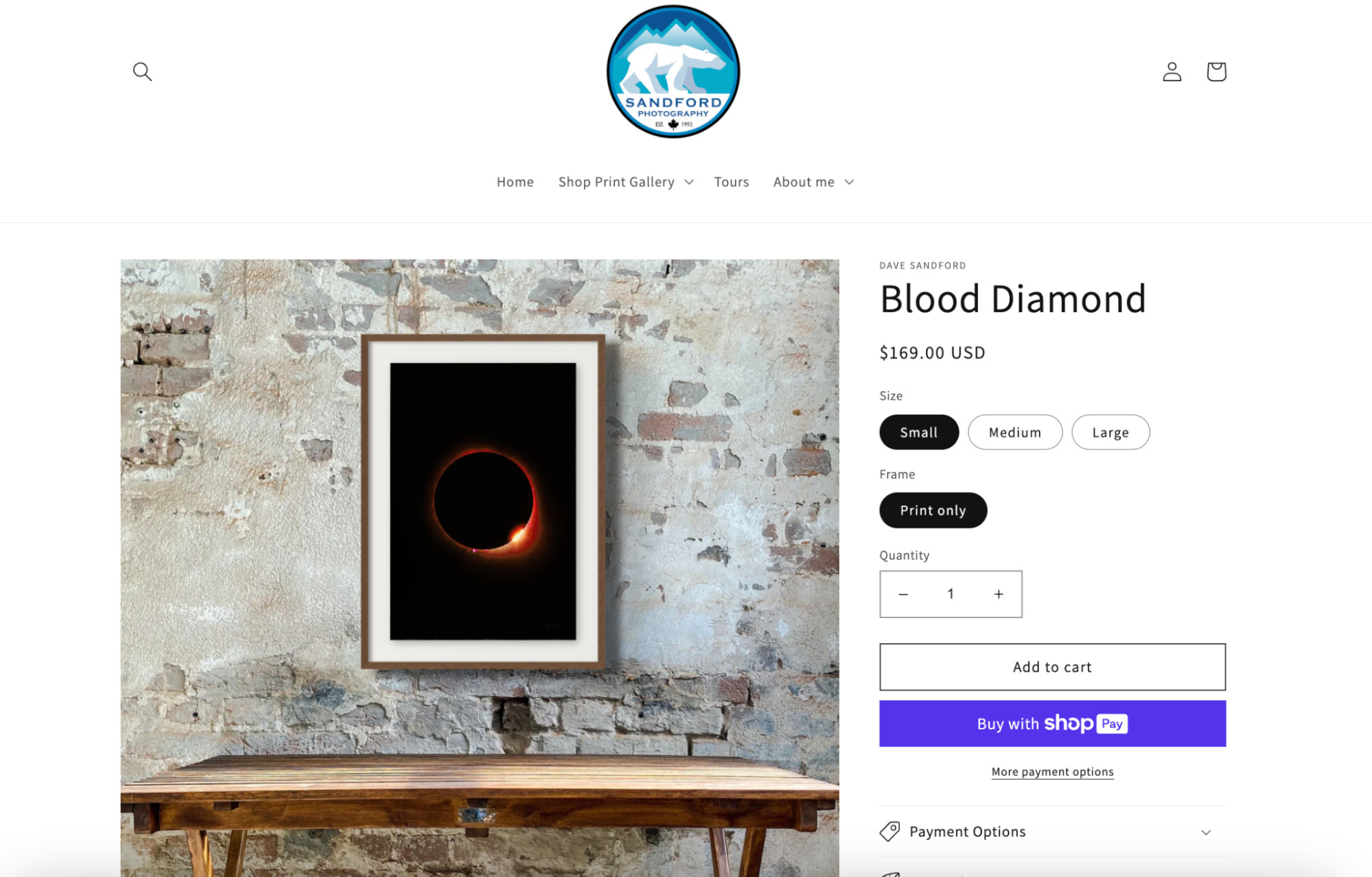 Product page for a print of a moon with a red border against a black background, showcasing ecommerce integration for photography sales
Product page for a print of a moon with a red border against a black background, showcasing ecommerce integration for photography sales
2.4. Understand Your Market
Identifying your target market is crucial for producing relevant and appealing photos.
- How to identify your target market? Determine who is most likely to buy your photos. For example, if you specialize in wedding photography, your target market might include wedding stationery brands or suit wholesalers. Tailor your images to meet the needs of this buyer persona.
What’s the benefits? This targeted approach ensures that you create images that resonate with potential buyers, increasing your chances of making sales.
3. How To Set Up Your Online Portfolio
Creating an effective online portfolio is essential for showcasing your best work and attracting potential clients. Here’s a step-by-step guide:
3.1. Choose The Right Platform
The ideal platform depends on your goals and the level of control you desire.
- Hobbyist/Passive Income: Stock photo submissions on sites like iStock or Alamy.
- Assignments From Brands: Apply to be an Unsplash+ contributor.
- Complete Control: Ecommerce platform like Shopify.
3.2. Plan Your Portfolio’s Structure
Your portfolio should highlight your best work and provide necessary context.
- Layout: Photos should be the focus, but include descriptions to provide context and improve SEO.
- Social Proof: Include quotes from satisfied customers or showcase successful campaigns featuring your images.
- Categories And Organization: Organize images by category (location, environment, subject, date) to help customers browse.
- Gallery Size: Only include high-quality images that showcase your best work.
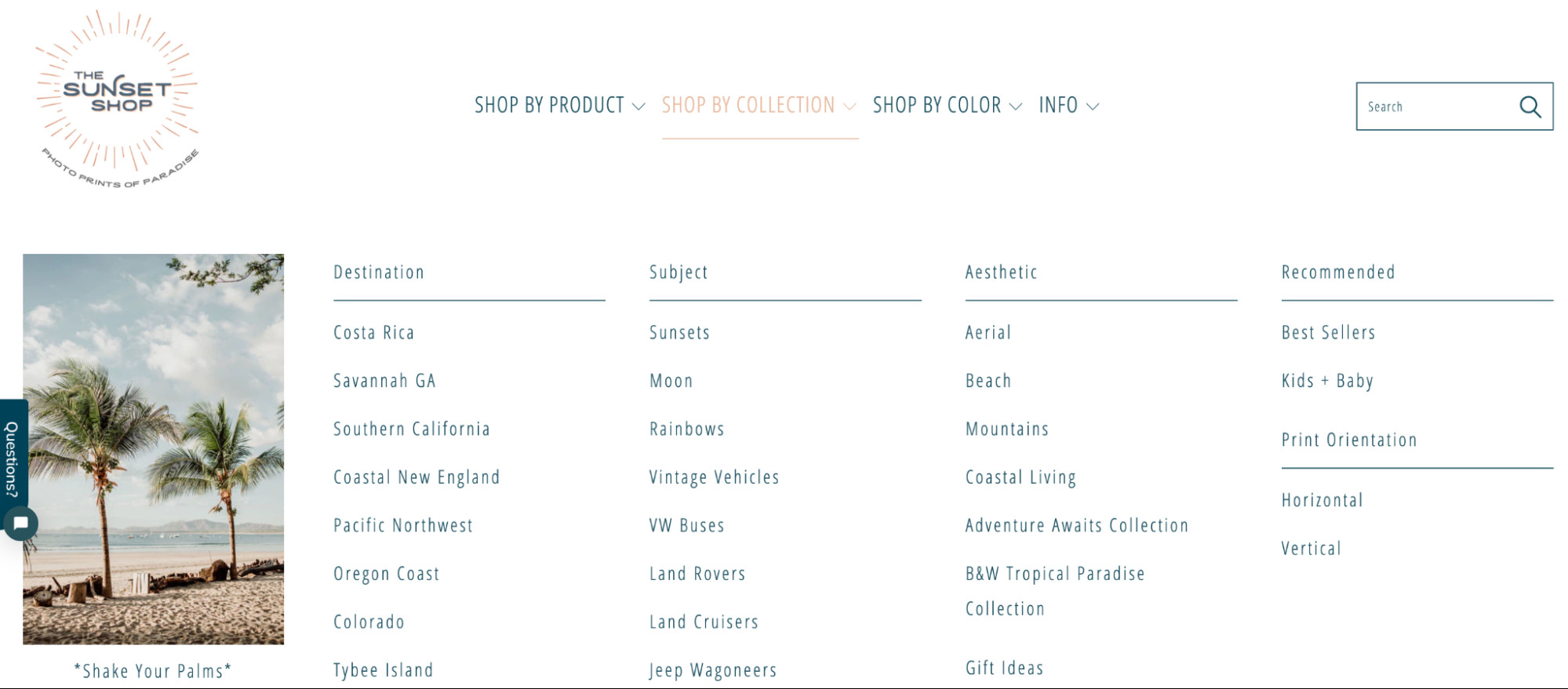 Example product categories on a photo print website include “Costa Rica”, “Sunset”, and “Mountains”, demonstrating effective portfolio organization
Example product categories on a photo print website include “Costa Rica”, “Sunset”, and “Mountains”, demonstrating effective portfolio organization
3.3. Optimize Images For The Web
Fast-loading images are crucial for a good user experience.
- Compress Image Sizes: Keep images as small as possible without compromising quality. Compress images between 60% and 80%.
- Use Descriptive File Names: Use names like “summer-evening-nature” instead of generic names.
- Write Alt Text: Describe your photo for search engines and screen readers.
3.4. Create An About Page
Personalize your portfolio by telling prospective customers about yourself.
- What to include? Include a brief summary of who you are and your photography journey. Share your passion for photography, how you got started, what you love to shoot, and where you find inspiration.
3.5. Implement Ecommerce Functionality
An ecommerce platform simplifies selling photos online.
-
Benefits of Shopify:
- Build an online storefront.
- Set up shop on social media storefronts.
- Take payments and handle taxes.
- Manage digital or physical product delivery.
- Manage marketing campaigns.
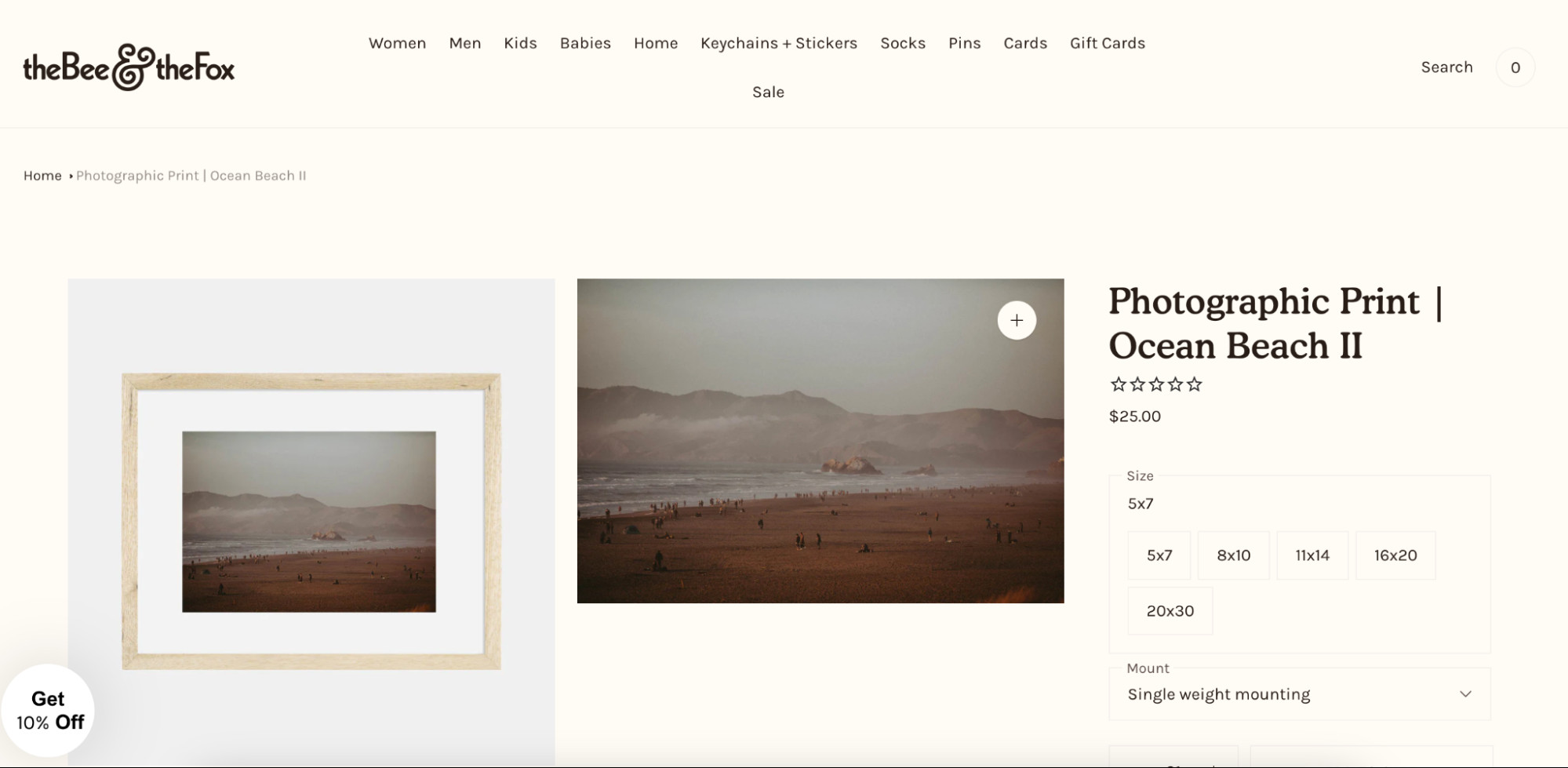 Product page for a 5×7 printed photo of a beach, illustrating ecommerce functionality for selling photography prints online
Product page for a 5×7 printed photo of a beach, illustrating ecommerce functionality for selling photography prints online
3.6. Ensure Mobile Compatibility
Most website traffic comes from mobile devices, so ensure your portfolio looks good on smaller screens.
-
How to achieve mobile compatibility?
- Use responsive website design.
- Display photos vertically.
- Use large, finger-friendly buttons.
3.7. Launch And Promote Your Photos
Share your photos with the world using various marketing tactics.
-
Marketing Tactics:
- Repost images on social media.
- Pin photos on Pinterest.
- Gift free prints to influencers.
- Document behind-the-scenes on TikTok, YouTube, or Instagram Reels.
- Build an email list by offering discounts.
4. How To Sell Photos As Prints And Photo Books
Diversify your income by selling physical products featuring your photography.
4.1. Selling Photos As Prints
You can sell photos as prints on paper or physical products like mugs, t-shirts, and calendars.
- How to do it? Work with a local photo lab or use a print-on-demand company to dropship products. Ensure product quality matches your photos by ordering samples.
4.2. Selling Photography Online As Photo Books
Photo books can showcase your photography around a compelling theme.
- How to do it? Use print-on-demand services to test demand before investing upfront. Ensure your photography is niche and consistent to create a cohesive photo book.
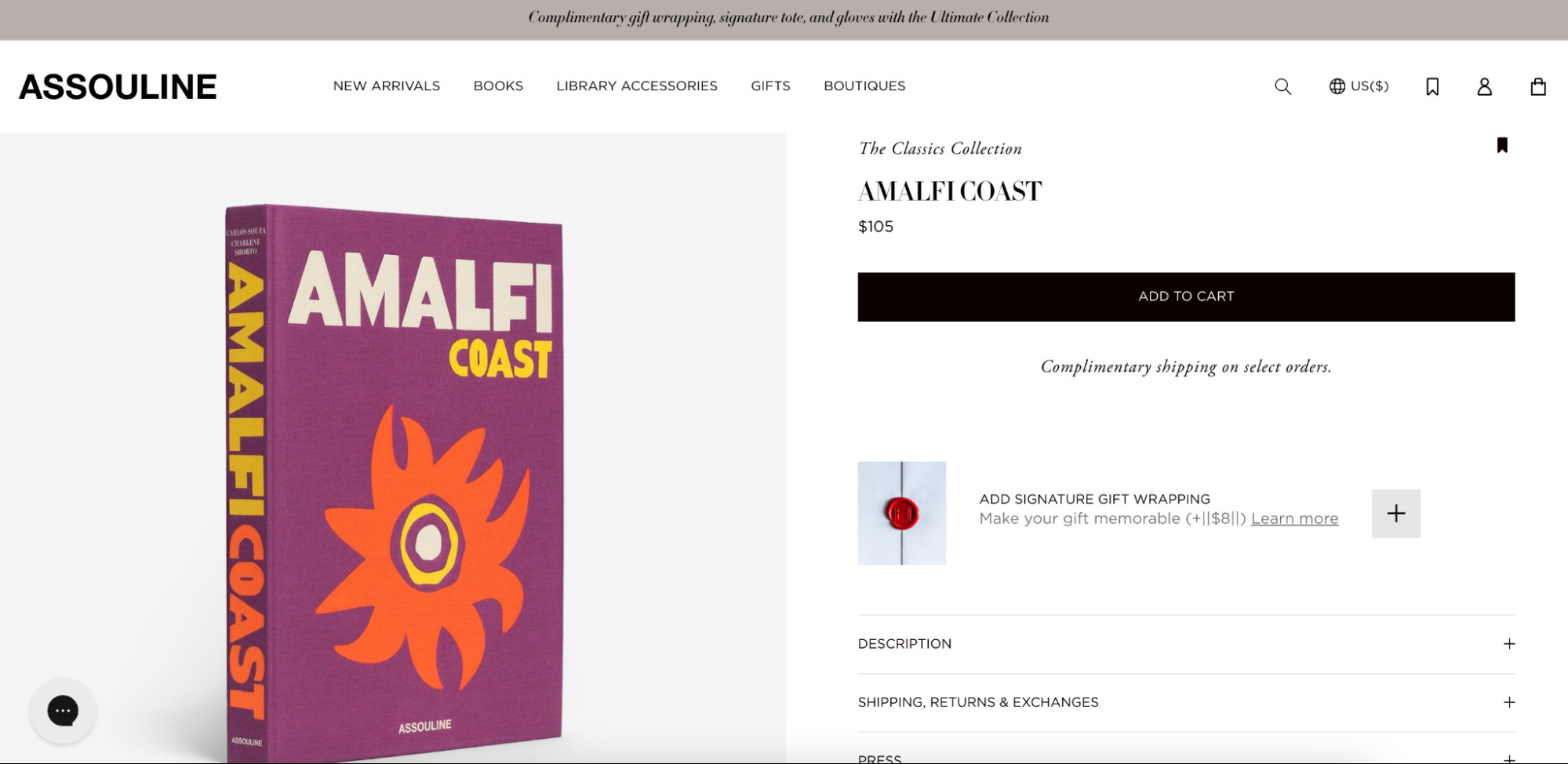 Photobook of images taken on the Amalfi Coast, demonstrating high-quality physical products for photography sales
Photobook of images taken on the Amalfi Coast, demonstrating high-quality physical products for photography sales
5. How To Sell Your Photography Services
Offer your photography services for events, fashion shoots, or product photography.
-
How to market yourself?
- List your services in freelance directories like Fiverr and Upwork.
- Network locally and meet clients via video chat.
-
Networking Tips:
- Always have business cards handy.
- Optimize your LinkedIn profile.
- Attend networking events.
- Build a personal brand on social media.
-
Use A Booking Platform: Platforms like Setmore and SimplyBook.me allow clients to book you when you’re available. If using Shopify, add a scheduling app to book appointments directly from your site.
6. Pricing Strategy For Selling Photos Online
Your pricing strategy determines your earning potential. Here’s how to decide:
- Do Market Research: Ask your target market how much they’d pay and see how much comparable photos sell for.
- Determine Your Profit Margins: Consider equipment costs, website hosting fees, and marketing budgets.
- Set Different Prices For Usage: Exclusive photos can sell for more than non-exclusive ones.
- Offer Discounts: Incentivize purchases with discounts and promotions.
- Consider Product Bundles: Sell collections of related images at a discounted price.
7. Legal Primer For Selling Your Photos Online
Understanding legal terms protects your rights when selling photography.
7.1. Glossary Of Legal Terms For Selling Photos Online
- Editorial Use: Permission to use in blogs, newspapers, and magazines.
- Commercial Use: Permission to use in marketing and advertising.
- Retail Use: Permission to use in creating physical products for sale.
- Exclusive Use: Only the purchaser can use the photo.
- Non-Exclusive Use: Multiple people can purchase and use the photo.
- Public Domain: No restrictions or copyright claims.
- Creative Commons: Conditional usage allowed with stated restrictions.
- Royalty-Free: Others can buy a license for unlimited use.
- Rights Managed: A one-time license with distribution restrictions.
- Right of Publicity: Subjects in photos have rights, especially for commercial use.
7.2. What To Do If Someone Steals Your Photos
-
How to protect your photos? Watermark your digital images. Use Photoshop or a watermark generator. A smaller watermark offers less impact, while a larger watermark offers more protection.
-
Steps to take:
- Send a cease and desist request.
- Send an invoice for using your photo.
- Get credit whenever your work is used.
8. How To Sell Photos Online FAQ
8.1. What Is The Best Way To Sell Photographs?
Selling them as stock images for sale on third-party websites like iStock, Shutterstock, or Alamy is an easy and affordable way.
8.2. Where Can I Sell My Photos Online For Money?
You can sell photos on platforms like:
- Alamy
- 500px
- Shutterstock
- Getty Images
- iStock
- Stocksy
- Picfair
- Adobe Stock
- Envato Elements
- Unsplash
8.3. How Do You Make Money From Stock Photography?
A stock agency licenses individual images to clients for a set price, and you, the photographer, receive a royalty payment.
By following these detailed strategies and utilizing the resources available at dfphoto.net, you can turn your passion for photography into a profitable online business. Explore our site for more in-depth guides, tutorials, and community support to help you succeed in the world of online photography sales. Connect with us at Address: 1600 St Michael’s Dr, Santa Fe, NM 87505, United States. Phone: +1 (505) 471-6001 or visit our website: dfphoto.net today.